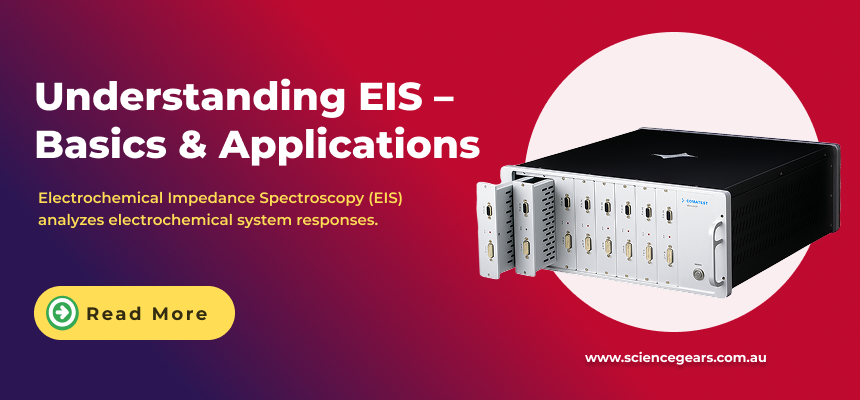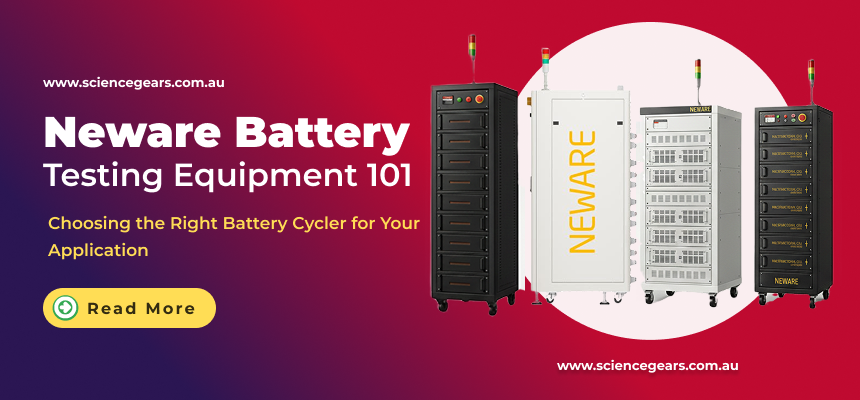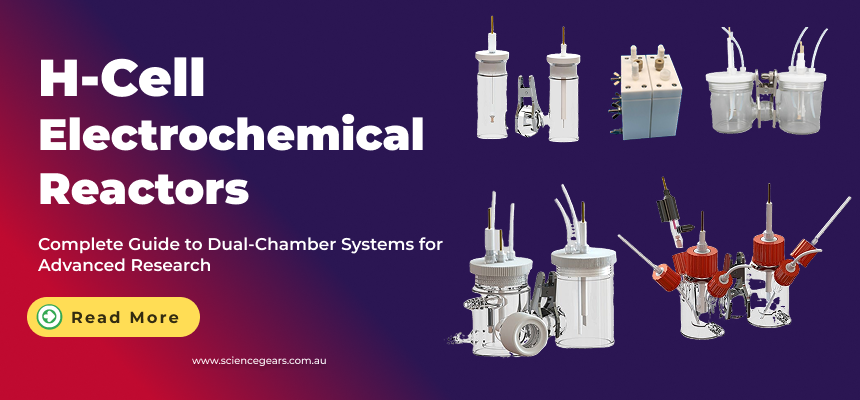A Practical Guide to Electrochemical Impedance Spectroscopy for Researchers
Introduction
Electrochemical Impedance Spectroscopy (EIS) is a powerful, non-destructive analytical technique used to study the dynamic response of electrochemical systems. By applying a small alternating current (AC) voltage and analysing the resulting current response, EIS reveals detailed information about electrode processes, reaction kinetics, and material properties.
From battery researchers evaluating charge-transfer resistance, to corrosion engineers monitoring coatings, to biosensor developers fine-tuning interfaces — EIS is an indispensable tool across numerous electrochemical applications.
What Is EIS?
Electrochemical Impedance Spectroscopy (EIS) measures the impedance of an electrochemical system as a function of frequency. It’s based on applying a small-amplitude AC voltage (typically 5–10 mV) to an electrochemical cell and measuring the resulting AC current.
EIS provides insight into:
- Charge-transfer kinetics
- Double-layer capacitance
- Diffusion processes
- Solution/electrode resistance
Frequency Domain Analysis
Instead of working in the time domain (like chronoamperometry), EIS operates in the frequency domain, typically from mHz to MHz. The output is often visualised using:
- Nyquist Plots – imaginary vs. real impedance
- Bode Plots – impedance magnitude and phase vs. frequency
Equivalent Circuit Modelling
EIS data are commonly interpreted using equivalent electrical circuits, like the Randles circuit, which models real electrochemical behaviour with components such as resistors, capacitors, and constant phase elements.
Related: What Is a Potentiostat?
How Does EIS Work?
A typical EIS setup includes:
- A potentiostat or galvanostat with EIS capability
- A three-electrode cell: working, reference, and counter electrodes
- An electrolyte and controlled test environment
Signal and Measurement Process:
- The system applies a sinusoidal voltage over a range of frequencies.
- The current response is measured.
- From the voltage and current phase shift, the impedance (Z) is calculated as:
Z(ω) = V(ω)/I(ω), where ω is the angular frequency.
This phase-sensitive technique reveals whether processes are resistive, capacitive, inductive, or diffusive in nature — critical for understanding reaction mechanisms.
Typical EIS Parameters & Plots
Nyquist Plot
- X-axis: Real impedance (Z')
- Y-axis: Imaginary impedance (Z'')
- Shape: Often a semicircle (charge-transfer) followed by a tail (diffusion)
Bode Plot
- X-axis: Frequency
- Y-axis: |Z| magnitude and Phase angle
- Useful for identifying characteristic frequencies and time constants
Key Parameters Extracted:
|
Parameter |
Meaning |
|
Rs |
Solution (electrolyte) resistance |
|
Rct |
Charge transfer resistance |
|
Cdl |
Double-layer capacitance |
|
Zw |
Warburg impedance (diffusion-related) |
Applications of EIS
Electrochemical Impedance Spectroscopy is widely used across disciplines:
- Battery and Supercapacitor Characterisation - Determining internal resistance, state of charge, and degradation
- Corrosion Monitoring and Coating Evaluation - Measuring polarisation resistance, coating integrity, and passivation behaviour
- Fuel Cell and Electrolyser Studies - Assessing electrocatalyst activity, membrane impedance, and kinetics
- Biosensor Development - Investigating surface binding, biomolecule attachment, and sensor calibration
- Photovoltaics and Photoelectrochemistry - Understanding charge recombination, semiconductor-electrolyte interfaces
Explore: Potentiostats & Galvanostats
Why Use EIS in Research?
- Non-destructive – No permanent damage to the system
- High sensitivity – Detects subtle changes at interfaces
- Comprehensive – Measures both charge transfer and diffusion
- Modelling capability – Allows precise equivalent circuit fitting
These features make EIS ideal for real-time monitoring, material development, and system optimisation in electrochemical research.
Choosing the Right EIS-Compatible Potentiostat
When selecting a potentiostat with EIS capabilities, consider:
|
Factor |
Importance |
|
Frequency range |
Determines the resolution of fast/slow processes |
|
Impedance accuracy |
Affects data reliability |
|
Noise performance |
Critical for low-current or high-resistance systems |
|
EIS software fitting |
Should support Nyquist/Bode analysis and equivalent circuit models |
|
Electrode compatibility |
Support for 2-, 3-, or 4-electrode setups |
Recommended Brands from ScienceGears:
- Zahner Elektrik – Gold standard in EIS performance
- Squidstat by Admiral Instruments – Affordable research-grade systems
- Corrtest – Entry-level EIS solutions with essential features
View: Single-Channel Potentiostats
Conclusion
Electrochemical Impedance Spectroscopy unlocks deep insights into the behaviour of electrochemical systems. It enables researchers to characterise reaction kinetics, model electrode processes, and improve device performance — all non-destructively.
Whether you're studying batteries, biosensors, corrosion, or solar cells, mastering EIS can elevate the depth and quality of your research.
Call to Action
Looking to add or upgrade your EIS capabilities?
Contact ScienceGears today to explore our full range of EIS-compatible potentiostats and get expert support tailored to your application.







